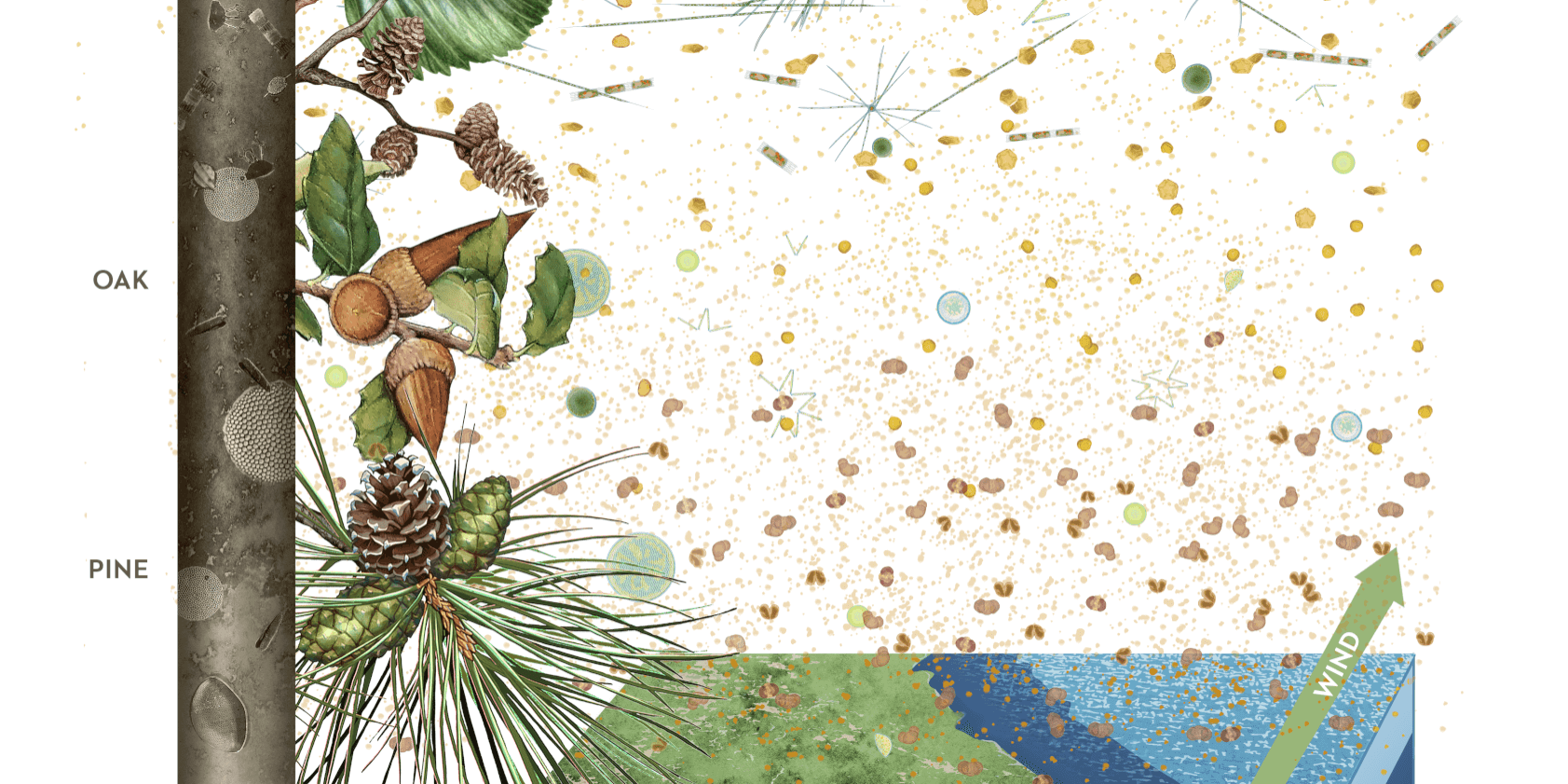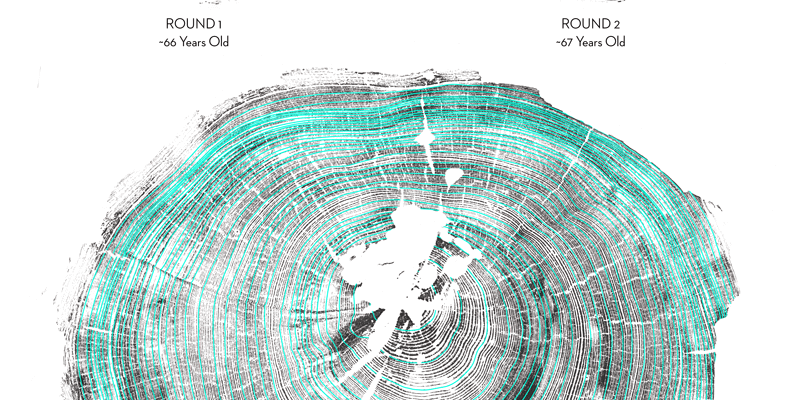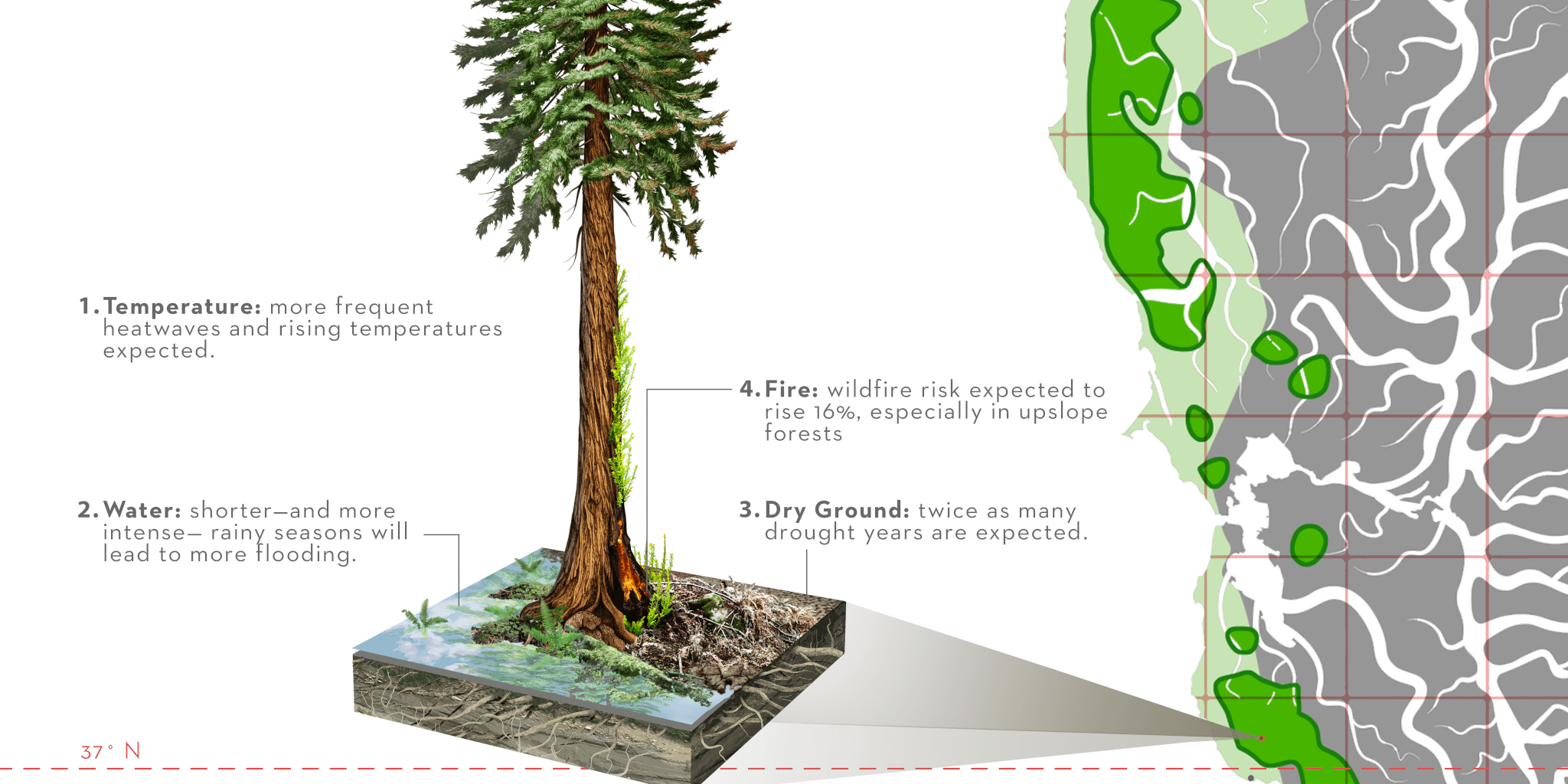video by halbergman
Our Climate Goals

Resilient Redwoods
Resilience is the measure of a system’s capacity to cope with change—to adapt and transform while maintaining its essential nature.
By that definition, redwoods are a remarkably resilient species. The oldest trees in the Santa Cruz mountains have withstood over a millennium of droughts, floods, pests, and fire. But climate change and a recent history of destructive land use means a precarious future for our treasured redwood forests and for people.
Climate change is already affecting the Santa Cruz mountains: Average temperatures in the region have gone up 2°F in just the past half century. California is now in the grips of its worst drought in at least 1,200 years—as far back as reliable records go—and scientists say human-caused climate change is largely to blame. Despite this, in early 2023, more than a dozen atmospheric river storms delivered historic rainfall to the region. And, driven in part by hotter temperatures and drier conditions, wildfires are growing bigger, more frequent, and more destructive.
Meanwhile, humanity’s footprint in the region is expanding. People have introduced new plants and animals, overturning the ecological relationships that have long made our region a global biodiversity hotspot. And over a century of suppressing fire has left our local forests loaded with flammable debris that chokes out native species and drives up the risk of catastrophic wildfire.
Redwoods and Climate
Redwood forests are crucial in providing a healthy, stable climate. Studies show that coast redwoods capture more carbon dioxide (CO2) from our cars, trucks, and power plants than any other tree on Earth. Through the process of photosynthesis, redwood trees transform carbon dioxide–the leading cause of accelerating climate change—into the oxygen we breathe.
When redwoods are cut down, burned, or degraded by human actions, they release their stored carbon back into the atmosphere much faster. And, they can no longer transform CO2 into the oxygen we breathe. This has twice the impact for the growing imbalance in the world’s carbon cycle and the climate’s stability. Deforestation and other destructive land use account for nearly 25% of carbon dioxide emissions around the world.
And, as the climate changes, the redwood forests in the Santa Cruz mountains are one of very few areas in the region that can provide a refuge for plants and animals to adapt, because the area has many microclimates, is cooled by coastal summertime fog, and is still largely unpaved.
But this region—once a safe haven—is increasingly at risk.
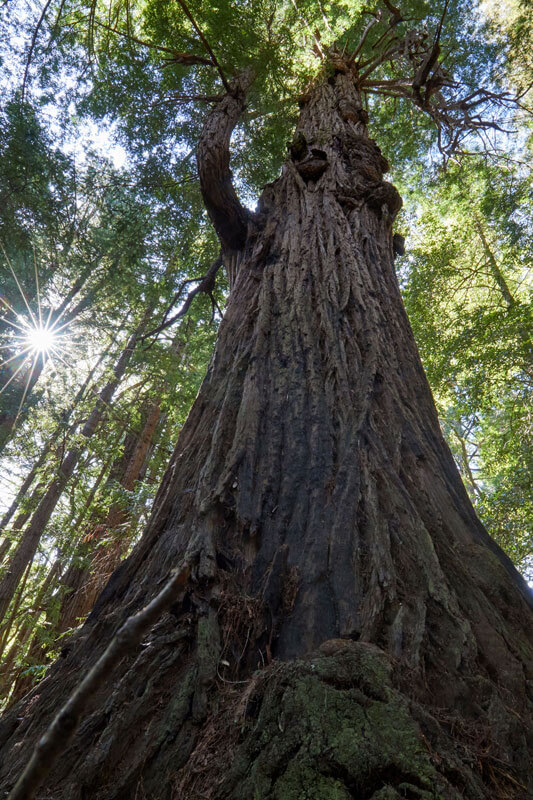
photo by Canopy Dynamics
Dire Conditions
With each passing year, scientists gather more data and sharpen the picture of how climate change will affect the Santa Cruz mountains. Climate change is already taking a toll on the forests we love, and the threats will only get worse as temperatures rise. Here’s what the experts predict for the next century:

Temperature
The outlook: Average temperatures in the Santa Cruz mountains will rise from current temperatures to anywhere between 2.7°F to 5.6°F by 2050. Heat waves will meanwhile become more frequent and severe, breaking existing records by as much as 7.4°F by 2050 and 9.0°F by 2100.
The impact: Rising temperatures are already stressing redwoods, resulting in smaller trees. More aggressive growth drives important habitat features, including increased complexity in canopies and increased storage capacity for water and CO2.
photo by Tambako The Jaguar
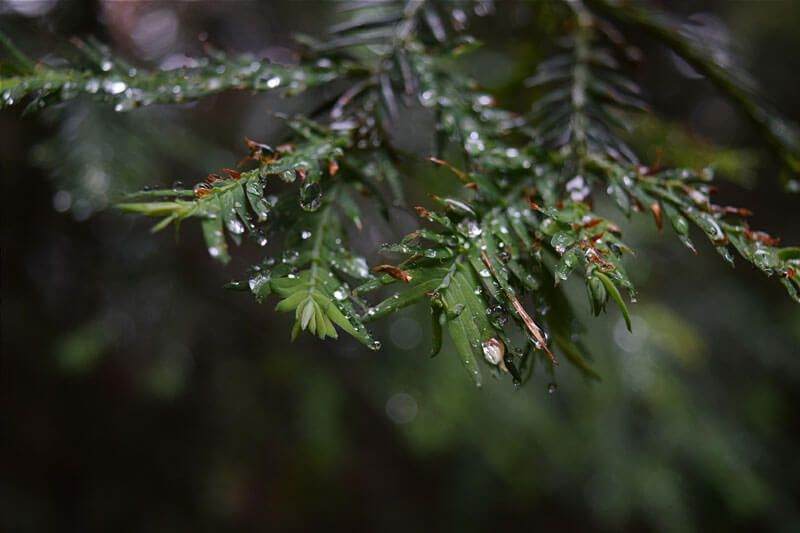
Precipitation
The outlook: Experts generally agree that the rainy season will become shorter and more variable, with a greater portion of the year’s rain falling in fewer, more intense storms, causing more frequent and severe flooding. Some models show up to an 8.8-inch decrease in annual rainfall by 2050, and others indicate a 6.6-inch increase.
The impact: Redwoods dominate coastal environments to take advantage of year-round precipitation. This variability adds to the uncertainty for redwoods to grow old, develop complex canopies, or reliably reproduce. Flooding also destabilizes underground root systems.
photo by Amanda Wild
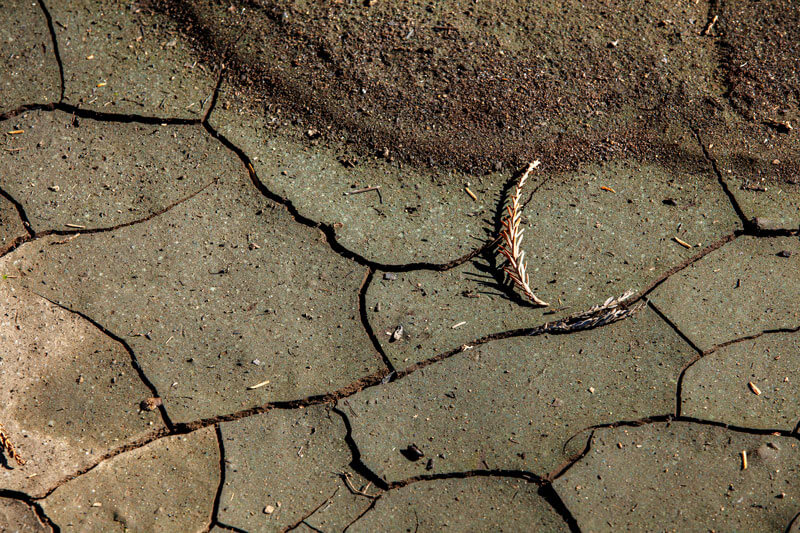
Drought
The outlook: Californians can expect twice as many drought years going forward, and those droughts will become intense. What we now think of as “once in a century” droughts could happen as often as every 20 years by 2100, and “20-year” droughts will happen every 10.
The impact: The one variable redwoods rely on most: water. As we are seeing now, drought is creating a lot of stress in otherwise healthy trees. The longer they endure the stresses of drought, the more likely they are to succumb, deplete resources, or die out altogether.
photo by Ian Bornarth
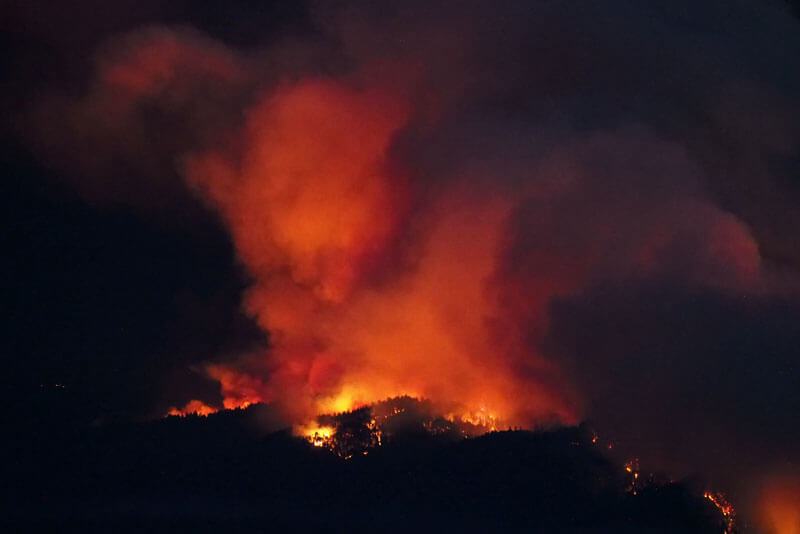
Wildfire
The outlook: Wildfire risk could rise by 16% throughout the Santa Cruz mountains, but this figure masks big differences in local conditions. For instance, experts expect fire risk in the Santa Clara Valley to remain level, while risks to upslope forests are likely to tick up sharply.
The impact: Fire may be regenerative for redwoods, but wildfire saps redwoods of critical resources and prolongs recovery time, especially if extreme fire decimates canopy systems. While more than 95% of redwoods look to have survived the most recent wildfire, another major wildfire strike could vastly increase mortality or even lead to shifts in habitat types across the region.
photo by Inklein
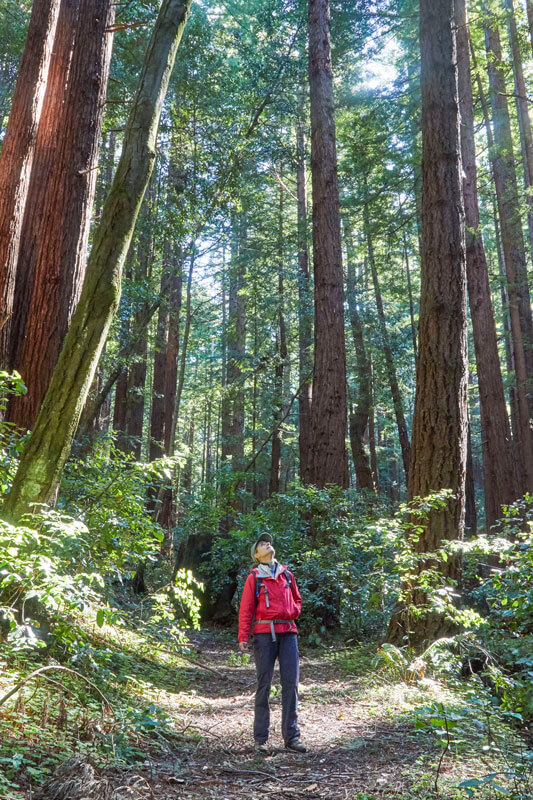
photo by Canopy Dynamics
Climate Action Now for Redwoods
It’s time to take bold action to ensure a future for redwood forests in the Santa Cruz mountains. Backed by decades of research and more than a century of experience protecting and stewarding these forests, the Sempervirens Fund Climate Action Plan is an urgently needed new approach to stewarding the natural communities of the Santa Cruz mountains.
For redwoods to survive:
- Protecting land must feature properties where they will thrive, now and in the future, prioritizing connectivity to other protected lands, elevation, and sources of water.
- Stewardship must be comprehensive across ecosystems, merging data, research, expertise and traditional Indigenous knowledge.
- Connecting People to the land remains a priority, through stewardship, volunteering, recreation, and education.
Our Climate Action Plan
1. We will protect land for redwoods to survive now and thrive in the long run.
As the climate changes, scientists predict that the range and character of redwood forests in the Santa Cruz mountains will change too. Some areas that have redwoods today could become too hot and dry to support them in the future. Other areas, especially along creeks and streams where water is available year-round, will become critical refuges where forests will continue to thrive.
Since our founding in 1900, Sempervirens Fund has protected 36,000 acres of threatened redwoods throughout the Santa Cruz mountains. But thousands more acres remain vulnerable to fragmentation and destruction through humn activities, especially development. Now our staff experts are incorporating the best available data from future climate models to pinpoint the places that we must protect and connect today to give the forest a fighting chance at long-term survival.
Our Goal
We seek to accelerate the pace of conservation and protect 7,000 acres of the most climate-resilient remaining forests by 2030. Achieving this will also:
- Expand habitat for endangered, threatened, and sensitive wildlife and plant species and communities, by protecting more miles of streams and acres of wetlands and watershed lands.
- Bolster the largest protected area in the Santa Cruz mountains, by expanding the Ano Nuevo-Butano-Big Basin complex of state park lands.
- Support the state’s 30x30 goals by contributing one-third of the conservation needed in the Santa Cruz mountains through the purchase and permanent protection of land.
2. We will steward forests for resilience.
We will restore an ethic of intensive, deliberate stewardship to the forests of the Santa Cruz mountains. For two decades Sempervirens Fund has cared for thousands of acres of redwood forests and other habitats, regenerating forests, restoring watersheds, and improving wildlife and habitat conditions for native species. Forests are not only the lungs of the natural world, but critical for carbon sequestration. And no tree species is as vital to sequestration as coast redwoods. We need more forests growing in more healthy ways to contribute to nature-based solutions for climate change. And healthier forests mean improved water capacity and biodiversity, key to the survival of habitat and wildlife throughout the region.
We cannot turn back time and reset forests to conditions prior to European colonization, but we can replicate similar conditions that adapt to modern challenges and opportunities for habitat survival. For example, prior to forced removal, the Indigenous Peoples of the region actively and expertly cared for these lands and waters. They lit frequent, low-intensity fires to maintain meadows and open woodlands where game species flourished. Burning also encouraged the growth of plant species used for food, tools, and shelter and made for easier travel.
In partnership with regional and state agencies and partners, and guided by Indigenous experts, we will expand the pace and scale of controlled fire introduced to the landscape, and will intensify efforts to reduce excess vegetation and remove fuels from the forest floor. These forest management practices will increase native habitat diversity and promote redwood resilience in the face of a hotter climate by clearing the forest floor of hazardous fuels, reducing the risk of catastrophic fires and making more water and sunlight available so remaining trees can grow larger and healthier.
Our Goal
We seek to increase redwoods’ estimated regional carbon storage capacity, which is 67% more effective than other conservation lands in the region, on the lands we protect by 2050. Achieving this will also:
- Help the biggest trees accelerate growth through active management, increasing forest health and expanding carbon storage by a minimum of 1.1 metric tons (equivalent to 131,164,622 gallons of gasoline consumed).
- Improve conditions for dynamic regional biodiversity, through healthier forests and aquifer recharge in protected watersheds.
- Support the restoration and recovery of forests, so they might thrive as well as survive climate change.
3. We will help nature protect people and communities.
We will protect 7,000 acres of land in the Santa Cruz mountains region which will help protect the species that rely on them—including us. Redwood forests help to protect our communities from the increased threat of climate change in a myriad of ways. Through ecosystem services such as helping to retain water—reducing the speed that water runs off the land by as much as 80% and helping to protect people and resources downstream—and improving its quality in the watershed, redwood forests will help see our communities through the increasingly drastic predicted drought and flood patterns ahead.
By sequestering more carbon than any other living thing on earth, these redwood forests will help to reduce the immediate effects of CO2 leaving our air cleaner and cooler, important both to the region and the planet. Adapted to create their own preferred microclimate, redwood forests are cooler and wetter than other nearby habitats, making them a refuge for wildlife and people during heatwaves ahead particularly as our communities continue to grow and grapple with the challenges of urban areas trapping more heat with fewer trees and green areas to offer respite.
And of course, the research is clear: time spent in nature is proven to be beneficial to our mental and physical health and well-being.
We will advocate for policies regionally and statewide that will not only help to protect more land but also improve equitable access to nature, increase the number of trees and green spaces in lower income communities, and address the disproportionate impacts of pollution and climate on people of color.
Our Goal
We seek to increase the resiliency of ecosystem services provided by our conserved lands to diminish the burden of natural or extreme weather events on nearby communities, and advance policies, programs, and funding that gets California, and especially our region, to 30% protected by 2030. In pursuing these regional outcomes, we will also:
- Increase protection of drinking water sources for nearby communities
- Sustain the unique and vital microclimates of redwood forests, which buffer temperature rise and diminish the impact of storms on local communities
- Support and promote equitable access to nature for our well-being and for all to enjoy
photo by Teddy Miller
Read More about Redwoods and Climate
The Impacts of Climate on Redwoods: Part 1
Clues About Climate's Future from Redwoods' Past
The Impacts of Climate on Redwoods: Part 2
What Redwoods Tell Us About Climate, and Water
The Impacts of Climate on Redwoods: Part 3
The Past, Present, and Future of Fire and Stewardship
